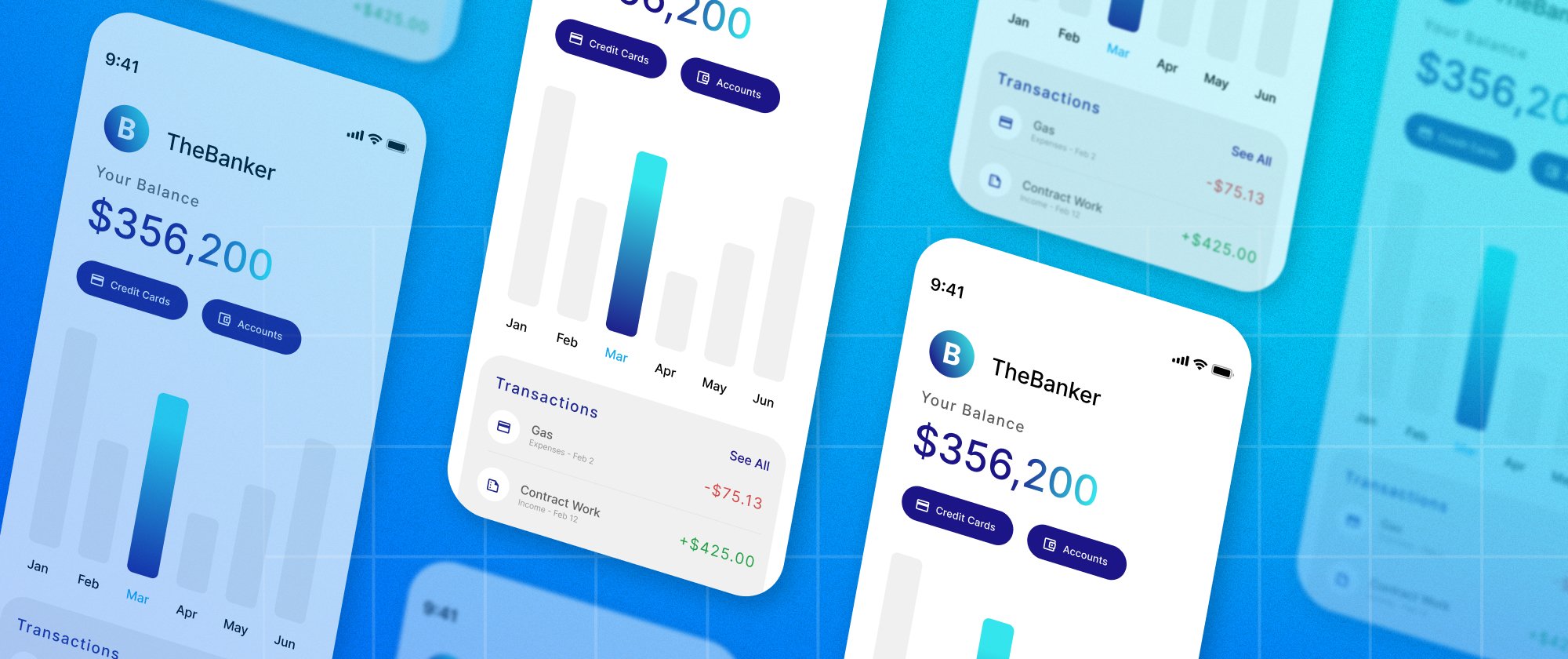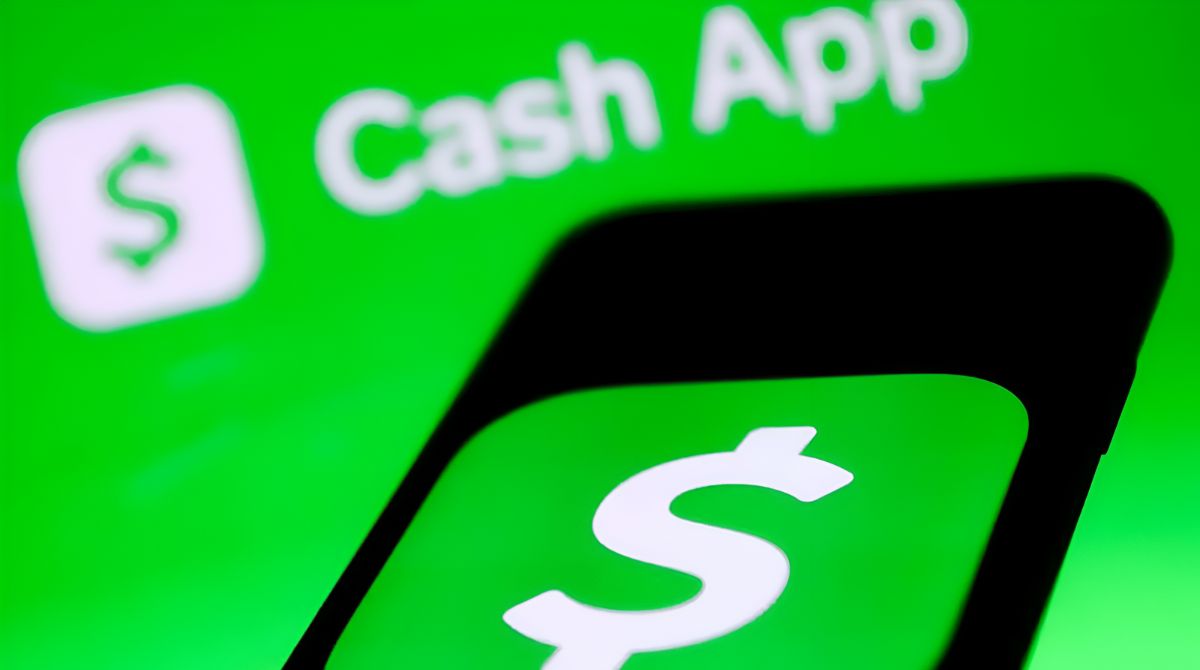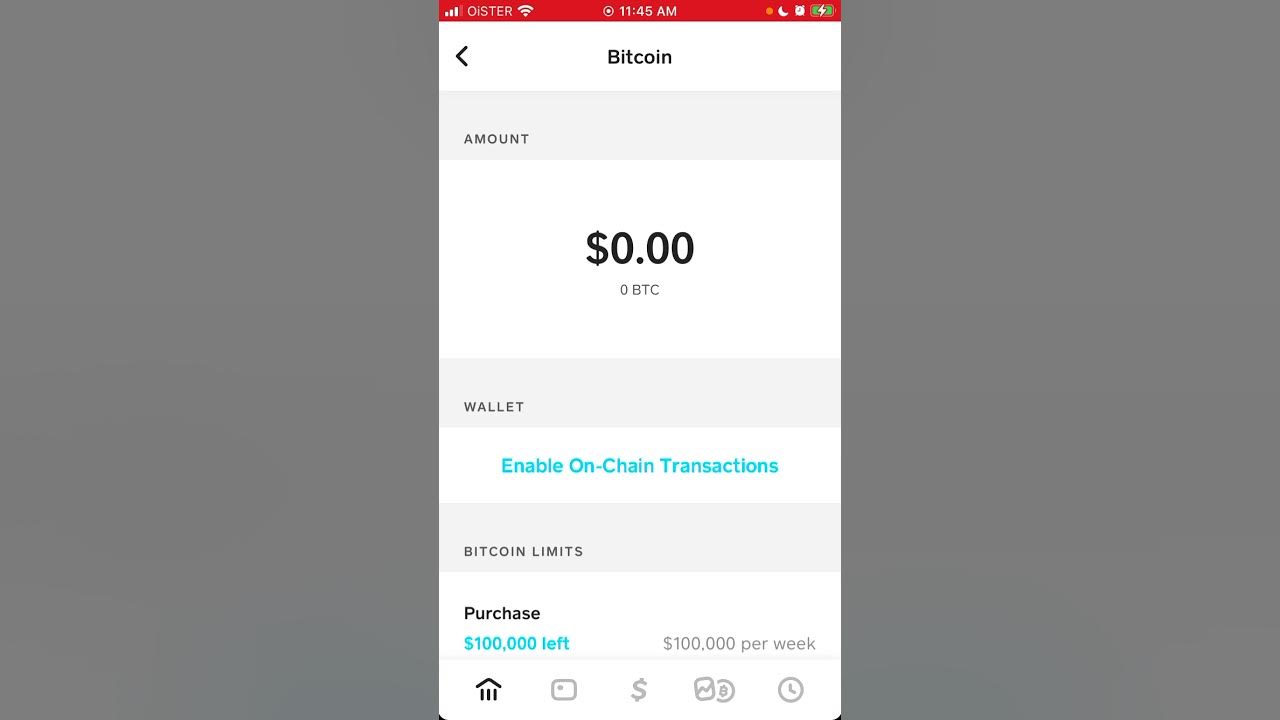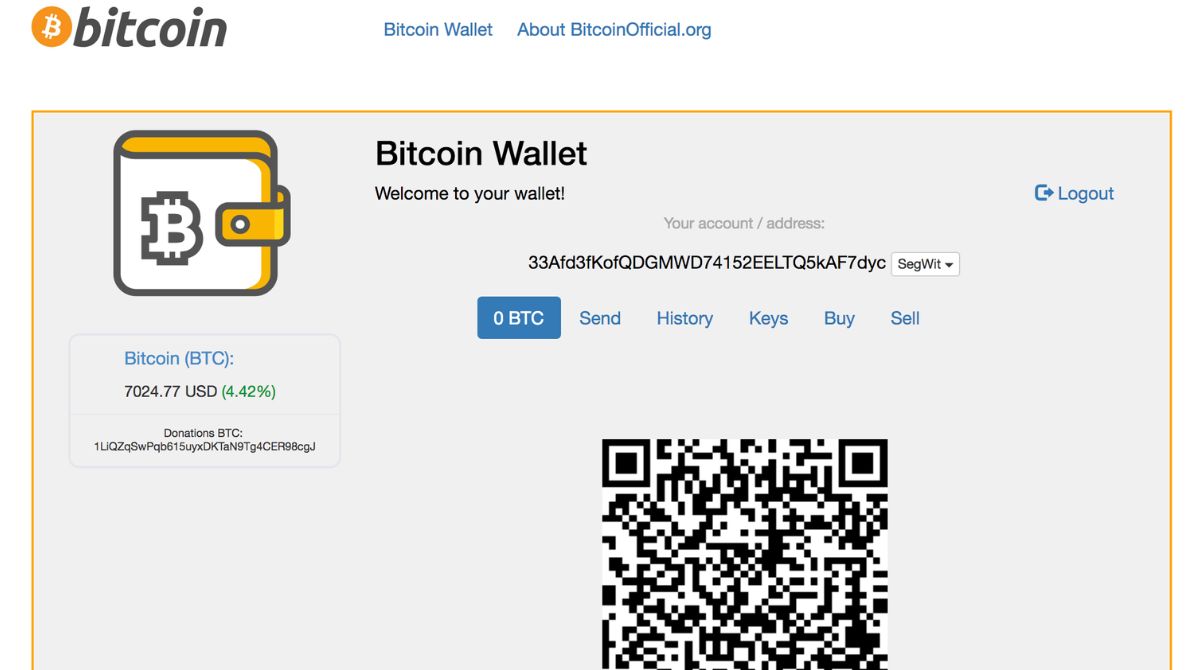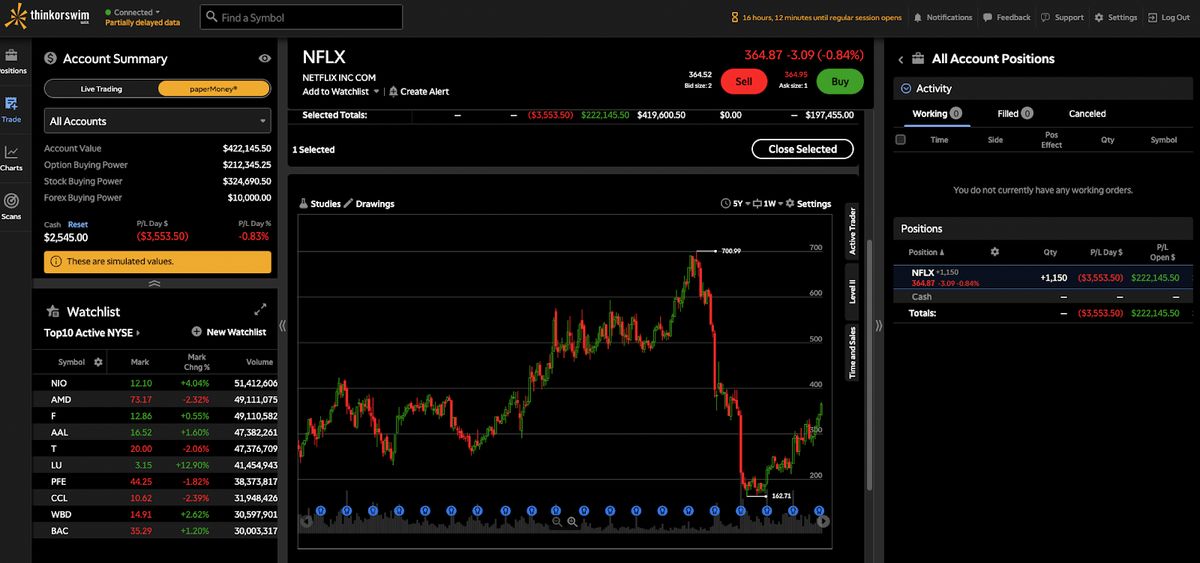Introduction
Welcome to the digital era where financial technology, also known as fintech, is revolutionizing how we manage our money. Fintech apps have become an integral part of our lives, offering convenience, efficiency, and personalized financial solutions at our fingertips.
Whether you’re a startup entrepreneur, a banking institution, or a seasoned fintech professional, creating your own fintech app can be a game-changer in this competitive landscape. The demand for seamless, secure, and user-friendly financial solutions continues to grow, and now is the perfect time to embark on your fintech app development journey.
In this article, we will explore the key steps involved in making a successful fintech app. From planning and designing to development and launch, we will guide you through the entire process, equipping you with the essential knowledge and insights to create an app that stands out from the crowd.
Whether your app aims to streamline payments, offer investment opportunities, or provide personal finance management tools, our comprehensive guide will help you bring your fintech vision to life and cater to the needs and expectations of today’s tech-savvy users.
We will discuss the crucial factors to consider when planning your fintech app, such as understanding the industry landscape, identifying user needs, and defining the app’s features and functionalities. Furthermore, we will delve into technical aspects like choosing the right technology stack, designing a user-friendly interface, and developing a robust backend infrastructure.
Moreover, we will explore the importance of integrating with third-party APIs to enhance your app’s functionality and ensure a seamless user experience. We will also delve into the vital aspects of security and compliance, testing and debugging, and the strategies for user acquisition and retention to maximize the success of your fintech app.
Lastly, we will discuss the significance of monitoring, analytics, and performance optimization to continuously improve your app’s performance and stay ahead of the competition.
So, whether you’re a fintech enthusiast or a business professional looking to capitalize on the fintech revolution, strap in and get ready to embark on an exciting journey as we dissect the process of making a fintech app from start to finish.
Understanding the Fintech Industry
The fintech industry encompasses the intersection between finance and technology, encompassing a wide range of innovative products and services that leverage technology to enhance financial processes. Understanding the rapidly evolving fintech landscape is crucial when developing a successful fintech app.
One of the key drivers of the fintech industry’s growth is the increasing consumer demand for more convenient and efficient financial solutions. Traditional banking methods are being disrupted by fintech startups that offer personalized and user-friendly alternatives. From digital payments and peer-to-peer lending to robo-advisors and blockchain-based solutions, the possibilities are endless.
Technological advancements have played a crucial role in the emergence of the fintech industry. The widespread adoption of smartphones and the internet’s ubiquity have created a tech-savvy user base hungry for innovative financial services. The convergence of AI, machine learning, big data, and automation has further fueled the development of cutting-edge fintech solutions.
In addition to startups, existing financial institutions also recognize the importance of embracing fintech. Traditional banks are partnering with fintech companies or developing their own in-house solutions to stay competitive and meet the evolving demands of their customers. The regulatory landscape is also evolving to accommodate fintech innovation, creating a more favorable and supportive environment for startups.
It is crucial for anyone entering the fintech industry to be aware of the various sectors and sub-sectors within it. Fintech can span across areas such as payments, lending, personal finance management, insurance, investment, and more. Understanding the market dynamics, customer needs, and competition within your chosen niche will enable you to position your fintech app effectively.
Moreover, keeping an eye on the latest industry trends is vital for your app’s success. Stay informed about emerging technologies, regulatory changes, and consumer preferences. Attend industry conferences, join fintech communities, and engage with experts to gain valuable insights and stay ahead of the curve.
By understanding the fintech industry, its transformational potential, and the evolving consumer needs, you can develop a fintech app that meets the demands of the market. In the next section, we will delve into the crucial step of planning your fintech app, where market research and user analysis are essential to create a product that resonates with your target audience.
Planning Your Fintech App
Before diving into the development process, it’s crucial to carefully plan your fintech app to ensure its success. Planning involves conducting market research, understanding user needs, defining app features, and mapping out the overall strategy.
First and foremost, you need to identify your target market and understand the specific pain points and challenges they face in their financial lives. Conduct market research to gather insights about your potential users’ preferences, behaviors, and expectations. This will help you align your app’s features and functionalities with their needs.
Next, consider your app’s unique selling points (USPs) and set goals for what you want to achieve. Define the problem your app solves and how it differs from existing solutions in the market. This will form the foundation of your app’s value proposition.
Once you have a clear understanding of your target audience and USPs, define the core features and functionalities of your fintech app. Prioritize the features based on their importance and relevance to your target audience. A minimum viable product (MVP) approach can help you launch quickly and gather user feedback for future iterations.
Consider the user experience (UX) and user interface (UI) design of your app. The design should be intuitive, visually appealing, and easy to navigate. A seamless and user-friendly experience is crucial for attracting and retaining users in the highly competitive fintech landscape.
Decide on the technology stack that will power your fintech app. Consider factors such as scalability, security, and compatibility with different platforms. It’s important to choose a reliable and robust technology stack that supports your app’s long-term growth.
Additionally, plan your app’s monetization strategy. Will you offer your fintech app as a freemium service with optional premium features, charge a subscription fee, or generate revenue through partnerships and affiliate programs? Evaluate various monetization models and choose the one that aligns with your app’s goals and target audience.
Finally, create a detailed project timeline with clear milestones and deadlines. Having a well-defined roadmap will help you stay focused and organized throughout the app development process. It will also ensure effective communication and coordination among the various team members involved.
Remember, proper planning is the foundation of a successful fintech app. It helps you align your app’s features with user needs, differentiates your app from competitors, and ensures a smooth and efficient development process. With a carefully planned fintech app, you’ll be well-positioned to tackle the next stages of development, implementation, and launch.
Identifying User Needs
When developing a fintech app, understanding and addressing the needs of your target audience is paramount to its success. By identifying user needs, you can tailor your app’s features and functionalities to provide a seamless and valuable user experience.
Start by conducting thorough user research to gain insights into your target market. This research should encompass demographics, financial behaviors, pain points, and preferences. Analyze the data to identify common trends and patterns that will inform your app’s design and functionality.
Listen to your users. Engage with potential users through surveys, interviews, or focus groups to gather firsthand feedback about their financial challenges and aspirations. By taking the time to understand their needs and frustrations, you can craft your app’s value proposition to solve these problems effectively.
Consider the different user personas that may exist within your target audience. Each persona may have unique financial goals, preferences, and priorities. Develop a deep understanding of their motivations and pain points to tailor your app’s features to their specific needs.
While it’s essential to address current user needs, anticipate future needs as well. Financial habits and preferences are constantly evolving. Stay ahead of the curve by incorporating forward-thinking features and technologies that can adapt to changing user demands.
Keep an eye on industry trends and emerging technologies within the fintech landscape. This will help you identify new opportunities to address user needs and provide innovative solutions. Innovations like machine learning, artificial intelligence, and blockchain can revolutionize how users interact with financial services.
Usability testing is another crucial step in identifying user needs. Conduct usability tests to gauge how effectively your app meets user expectations and address any pain points or usability issues. Incorporate user feedback and iterate on your design to continually improve the user experience.
By identifying and addressing user needs, you can differentiate your fintech app from competitors and build a loyal user base. Continuously listening to users and adapting your app to meet their evolving needs will create a positive user experience and foster long-term success.
Defining the App Features and Functionalities
Defining the features and functionalities of your fintech app is a critical step in its development process. These features will determine the value your app brings to users and differentiate it from competitors. To ensure success, it’s important to carefully consider the core functionalities that align with user needs and offer a compelling user experience.
Begin by referring back to the insights gained from user research. Use this information to identify the key pain points your target audience faces and how your app can address them. Focus on features that directly solve these problems, providing an intuitive and seamless solution.
Consider the essential features that most fintech apps offer, such as account registration, secure authentication, and personal finance management. These core functionalities lay the foundation for your app’s functionality and usability.
Additionally, think beyond the basics and consider unique features that provide added value to users. This could include features like budgeting tools, expense tracking, goal-setting capabilities, financial education resources, or investment portfolio management. Determine which of these features align with your app’s target audience and value proposition.
Remember to prioritize the features based on their importance and complexity. A Minimum Viable Product (MVP) approach can be beneficial in the early stages to focus on the most critical functionalities and release the app quickly.
Collaborate with your development team to ensure the technical feasibility of each feature. Consider the scalability and potential future enhancements you may want to incorporate. This will help you avoid future roadblocks and allow for seamless updates and upgrades as your app evolves.
Think about the user interface (UI) and user experience (UX) design of your app. Ensure that the design and layout align with your app’s purpose and target audience. Aim for a visually pleasing and easy-to-navigate interface, with clear and intuitive functionality. A smooth and seamless user experience will enhance user satisfaction and engagement.
Lastly, consider the compatibility of your app with various platforms and devices. Whether it’s iOS or Android, make sure your app is optimized for the chosen operating systems and screen sizes. This will help maximize its reach and accessibility to a larger user base.
By carefully defining the features and functionalities of your fintech app, you can create a solution that addresses user needs, provides value, and offers a delightful user experience. Continuously gather user feedback and iterate on your app’s features to ensure it remains relevant and competitive in the ever-evolving fintech landscape.
Choosing the Right Technology Stack
Choosing the right technology stack is a crucial step in the development of your fintech app. The technology stack refers to the combination of programming languages, frameworks, libraries, and tools that are used to build the app’s front-end and back-end components. By selecting the appropriate technology stack, you can ensure that your app is scalable, secure, and efficient.
Before making a decision, consider the specific requirements and goals of your fintech app. Evaluate factors such as scalability, security, performance, time-to-market, and development cost. Keep in mind that the fintech industry demands robustness and reliability to handle sensitive financial data.
For the front-end development of your app, consider using frameworks like React.js or Angular.js. These frameworks offer features like component reusability, smooth rendering, and efficient data handling, which are important when creating a responsive and user-friendly interface. Additionally, ensure that the chosen front-end framework is compatible with mobile devices for a seamless mobile experience.
On the back-end, you have a range of options, such as Node.js, Python, or Java. Node.js is known for its scalability, speed, and event-driven architecture, making it suitable for handling real-time data, transactions, and communication in fintech apps. Python is renowned for its simplicity and versatility, making it a popular choice for data-intensive applications. Java, being a highly secure and mature language, is ideal for building complex and large-scale enterprise fintech solutions.
When working with financial data, security is of utmost importance. Ensure that your technology stack supports industry-standard encryption and security protocols to protect user information. Consider using technologies like SSL/TLS for securing data in transit and implementing robust authentication and authorization mechanisms.
Furthermore, explore libraries and APIs that can enhance your app’s functionality. For example, integrate with payment gateway APIs like Stripe or PayPal to enable seamless payment processing. Additionally, leveraging third-party APIs for features like credit scoring, stock market data, or KYC (Know Your Customer) verification can enrich your app and streamline user experience.
Consider the hosting and deployment options for your fintech app. Cloud platforms like AWS, Google Cloud, or Microsoft Azure offer scalable and flexible infrastructure for hosting your application. They also provide various tools and services to optimize security, performance, and monitoring.
Finally, stay updated with the latest industry trends and updates in the fintech technology landscape. As the industry evolves, new technologies and frameworks emerge, offering improved efficiency and functionality.
By carefully selecting the right technology stack for your fintech app, you can lay a solid foundation for its development and ensure its long-term success. A well-engineered tech stack will not only provide a seamless user experience but also enable you to scale, adapt, and meet the evolving needs of your users.
Designing the User Interface
The user interface (UI) plays a crucial role in the success of your fintech app. A well-designed UI enhances usability, engagement, and overall user satisfaction. When designing the UI, it’s important to create a visually appealing and intuitive interface that aligns with your app’s purpose and target audience.
Start by understanding your target audience and their preferences. Consider factors such as age, profession, and familiarity with technology. This will help you tailor the UI design to their specific needs and expectations.
Focus on creating a clean and minimalist design that removes clutter and promotes ease of use. Use white space effectively to provide visual breathing room and highlight important elements. Make sure that the colors, fonts, and visual hierarchy are consistent with your brand identity and reinforce the app’s purpose.
Utilize intuitive navigation patterns and ensure that users can easily find and access the app’s functionalities. Incorporate familiar interaction patterns, such as swiping, tapping, and scrolling, to provide a seamless and intuitive experience.
Consider the responsiveness of your UI design, ensuring that it adapts to various screen sizes and orientations. With the increasing use of mobile devices, it is imperative to create a mobile-friendly UI that enables users to access your fintech app on the go.
Pay special attention to designing forms and input fields. Use clear labels and placeholders to guide users and reduce friction. Implement validation checks to provide real-time feedback and minimize errors during data entry.
Visualize data effectively by using charts, graphs, and infographics. Presenting complex financial information in a visually appealing and comprehensible manner enhances user understanding and engagement.
Consider the accessibility of your UI design. Incorporate features for users with disabilities, such as providing alternative text for images or ensuring proper color contrast for visually impaired users. Accessibility not only improves the user experience for all users but also ensures compliance with regulatory standards.
Iterate and test your UI design with representative users to gather feedback and make improvements. Conduct usability tests to identify potential pain points and areas for enhancement. User feedback is invaluable in refining your UI design and ensuring a positive user experience.
Lastly, stay updated with emerging design trends and best practices within the fintech industry. Keep an eye on leading fintech apps and websites for inspiration and to stay in tune with user expectations.
By designing a user-friendly and visually appealing UI, you can enhance the overall user experience of your fintech app. A well-designed UI not only creates a positive first impression but also increases user engagement, satisfaction, and long-term retention.
Developing the Backend Infrastructure
The backend infrastructure of your fintech app is responsible for handling crucial operations such as data management, security, and integrations with external systems. Developing a robust and scalable backend infrastructure is vital to ensure the smooth functioning of your fintech app.
Start by defining the architecture of your backend system. Choose an architecture pattern that aligns with your app’s requirements, such as a monolithic architecture or a microservices architecture. Consider factors like scalability, modularity, and ease of maintenance when selecting the architecture pattern.
Select a programming language and framework that best suit your backend needs. Popular choices for fintech app development include Node.js, Python, or Java. These languages offer robust libraries, frameworks, and tools that can facilitate the development process and ensure high-performance backend functionality.
When it comes to managing data, consider the relational or non-relational databases that are most suitable for your app’s requirements. Relational databases like MySQL or PostgreSQL provide structured data storage, while non-relational databases like MongoDB or Cassandra offer flexibility and scalability for handling large volumes of data.
Implement proper security measures to protect user data and financial transactions. Utilize encryption protocols to secure data in transit and at rest. Implement secure authentication and authorization mechanisms to ensure that only authorized users have access to sensitive information. Regularly perform security audits and vulnerability assessments to identify and address any potential security risks.
Consider implementing frameworks and libraries for API development and integration. APIs are crucial for connecting your app with external services such as payment gateways, authentication providers, and other financial APIs. Use well-documented and well-maintained API frameworks, such as Express.js for Node.js, Django for Python, or Spring Boot for Java, to streamline the development and integration processes.
Ensure that your backend infrastructure is scalable and can handle increased user demand. Cloud platforms like AWS, Google Cloud, or Microsoft Azure provide scalable infrastructure and services that can accommodate the growth of your app. Utilize features like auto-scaling, load balancing, and serverless computing to optimize resource allocation and handle variable loads efficiently.
Adopt a robust testing strategy for your backend infrastructure. Utilize unit tests, integration tests, and end-to-end tests to validate the functionality and performance of your backend components. Implement a continuous integration and deployment (CI/CD) pipeline to automate the testing and deployment processes, ensuring a streamlined and efficient development workflow.
Collaborate closely with your front-end development team to define APIs and establish clear communication protocols between the client-side and server-side components. Regularly communicate and coordinate with your developers to ensure efficient integration and interoperability across the different layers of your fintech app.
By focusing on developing a reliable and scalable backend infrastructure, you can ensure the seamless functioning of your fintech app. Implementing robust security measures, optimizing performance, and utilizing the right technologies will provide a solid foundation for your app’s backend, enabling it to handle user demands and data management effectively.
Integrating with Third-Party APIs
Integrating with third-party APIs is a crucial aspect of building a fintech app. By leveraging the functionalities of external services, you can enhance your app’s capabilities and provide a seamless user experience. Integrations with payment gateways, authentication providers, financial data sources, and other APIs can greatly enrich the features and functionalities of your app.
When selecting third-party APIs, consider their credibility, security measures, and developer support. Choose APIs that align with your app’s requirements and have a proven track record in terms of reliability and data accuracy.
Payment gateways are essential for facilitating secure financial transactions within your app. Popular payment gateway providers like Stripe, PayPal, or Braintree offer comprehensive APIs that enable seamless payment processing, subscription management, and fraud prevention measures. Integrate with a payment gateway that supports your target regions, currencies, and preferred payment methods.
In addition to payment gateways, authentication providers are crucial for ensuring secure access to your app. By integrating with providers like OAuth or OpenID Connect, you can enable social login options or single sign-on (SSO) functionality. This streamlines the registration and login process for users and improves overall user experience.
Financial data APIs play a significant role in fintech apps, providing access to real-time market data, account information, and transaction details. These APIs help users track their investments, manage budgets, and gain valuable insights into their financial health. Consider integrating with popular financial data providers like Plaid, Yodlee, or Alpha Vantage to access accurate and up-to-date financial data.
When integrating with third-party APIs, prioritize user experience and ensure a seamless flow of information between your app and the external services. Implement error handling and contingency measures to handle situations where the API may be temporarily unavailable or returns unexpected results. Consider caching mechanisms to optimize data retrieval and minimize data transfer over the network.
Implement proper security measures when integrating with third-party APIs. Ensure that sensitive user data is transmitted securely through encryption protocols and adhere to industry-standard security practices. Regularly assess the security processes and compliance measures of the third-party API providers to ensure the protection of user information.
Document the integration process carefully, including the API endpoints, parameters, and authentication mechanisms. This will facilitate smooth collaboration with your development team and provide a reference for future maintenance and updates.
Regularly monitor the performance and functionality of the integrated APIs. Set up monitoring tools and logs to track API usage, response times, and any errors or exceptions. Stay in touch with the API providers for updates, changes, and deprecated versions to ensure your app remains compatible and functioning optimally.
By integrating with third-party APIs, you can leverage existing services and empower your fintech app with powerful functionality. Choosing reliable and secure APIs, implementing smooth data flow, and adhering to best practices will enhance your app’s capabilities while providing users with a seamless and enriched experience.
Ensuring Security and Compliance
Security and compliance are of utmost importance in the fintech industry. As a provider of financial services, it is essential to ensure the protection of user data, secure transactions, and comply with regulatory standards. Implementing robust security measures and maintaining compliance is crucial to building trust with your users and safeguarding their sensitive information.
Encrypting sensitive data is a fundamental security measure. Utilize industry-standard encryption protocols such as SSL/TLS to secure data transmission between your app and the server. Encrypt data at rest using technologies like AES (Advanced Encryption Standard) to protect sensitive information stored on your servers or databases.
Implement strong authentication and authorization mechanisms. Utilize multi-factor authentication to add an extra layer of security by requiring users to provide multiple forms of identification. Implement password hashing and salting techniques to protect user passwords from being compromised.
Regularly update and patch your software to ensure you have the latest security patches and bug fixes. Vulnerabilities and weaknesses in your app’s code can be exploited by hackers. Keep up to date with security advisories and apply necessary updates promptly.
Perform regular security audits and penetration testing to identify potential vulnerabilities in your app. Engage with third-party security experts or conduct internal assessments to assess the effectiveness of your security measures. This will help you proactively address any vulnerabilities and strengthen your app’s security posture.
Ensure that your fintech app complies with relevant regulatory standards and guidelines. Familiarize yourself with regulations, such as General Data Protection Regulation (GDPR), Payment Card Industry Data Security Standard (PCI DSS), and Anti-Money Laundering (AML) requirements. Implement necessary controls and procedures to comply with these standards and protect user data.
Implement thorough data privacy policies and obtain appropriate user consent for data collection and processing. Clearly communicate to users how their data will be used and stored, and provide them with control over their personal information. Maintain transparency in your data handling practices to build trust with your users.
Regularly backup your data to ensure the availability and integrity of user information. Implement disaster recovery plans and data backup strategies to mitigate the risk of data loss. Store backups securely and test restoration processes periodically to verify their effectiveness.
Establish strict access control measures to limit access to sensitive data and system resources. Implement role-based access control (RBAC) to ensure that users and administrators only have access to the data and functionalities they require for their designated roles. Monitor and audit user activity to detect any suspicious behavior and quickly respond to potential threats.
Stay informed about evolving security threats and industry best practices. Attend industry conferences, participate in security forums, and keep up to date with news and alerts from reputable sources. By staying informed and proactive, you can protect your app and its users from emerging security risks.
By prioritizing security and compliance in your fintech app, you instill confidence in your users and demonstrate your commitment to safeguarding their financial information. It is essential to make security an ongoing process, regularly assessing and updating security measures to adapt to evolving threats and industry requirements.
Testing and Debugging
Testing and debugging are crucial steps in the development of any fintech app. Through comprehensive testing, you can identify and fix any issues or bugs, ensuring a high-quality and reliable user experience. By following a systematic approach to testing and debugging, you can minimize errors, improve performance, and deliver a polished app to your users.
Start with unit testing, which involves testing individual components or functions of your app in isolation. Write test cases to verify the expected behavior of each component and ensure they function correctly. This helps identify any issues with your code at an early stage and ensures the stability of your app.
Additionally, integration testing is essential to validate the interaction and compatibility of different modules and components within your fintech app. Test the integration points thoroughly, ensuring data flows smoothly between various functionalities and external services. This ensures that your app functions seamlessly as a unified whole.
Perform end-to-end testing to simulate real-world user interactions and scenarios. Test the app’s features and functionalities in their entirety to ensure they work together as expected. By testing the complete user journey, you can uncover any issues that may arise during user interaction and address them proactively.
Implement regression testing to ensure that new updates or modifications to your app do not introduce unexpected issues or regressions in previously working features. Re-run previous test cases to verify that existing functionalities continue to work as intended after implementing new changes.
Implement a robust debugging process to identify and resolve issues in your app’s code. Utilize debugging tools and techniques to pinpoint the root cause of errors. Logging, error tracking, and crash reporting tools can help gather and analyze actionable data to facilitate effective debugging.
Perform performance testing to evaluate your app’s responsiveness, speed, and scalability under various load conditions. Test the app’s performance with different numbers of concurrent users to ensure it can handle the expected traffic and usage patterns. Identify and optimize any bottlenecks or performance issues that may impact the app’s user experience.
Consider conducting user acceptance testing to gather feedback from actual users before launching your app. This provides valuable insights into the user experience and helps identify any usability issues or areas for improvement. External feedback can help enhance your app’s usability and address any potential user frustrations or pain points.
Utilize automated testing tools and frameworks to streamline the testing process. Automation can expedite the execution of repetitive test cases, freeing up time for your development team to focus on more complex scenarios. It also ensures consistency in testing and reduces the chances of human error.
Before launching your app, perform a final round of testing to ensure that all bugs have been resolved. Conduct a thorough regression test to verify that all functionalities are working as intended. Iterate on improvements based on user feedback and conduct additional tests to guarantee a seamless user experience.
By prioritizing testing and debugging, you can deliver a high-quality, bug-free fintech app to your users. Rigorous testing helps identify and resolve issues, ensuring that your app performs reliably and provides the expected level of security and functionality.
Launching Your Fintech App
Launching your fintech app is an exciting milestone in the development process. A successful launch is essential to attract users, gain market traction, and establish your app’s presence in the fintech industry. Proper planning, preparation, and execution are key to ensuring a smooth and impactful launch.
Prioritize market readiness before launching your app. Ensure that all essential features and functionalities are in place and thoroughly tested. Analyze user feedback and make necessary improvements based on usability and performance to provide the best possible user experience.
Create a comprehensive marketing strategy to generate buzz and awareness around your app. Leverage various marketing channels, such as social media, email campaigns, and content marketing, to reach your target audience. Emphasize the unique value proposition of your app and highlight how it solves user pain points.
Consider leveraging partnerships to expand your reach and acquire users. Collaborate with relevant fintech influencers, financial institutions, or industry stakeholders to increase your app’s visibility. Such partnerships can provide valuable endorsements and drive user adoption.
Optimize your app store presence to maximize visibility and downloads. Invest in app store optimization (ASO) techniques, such as using relevant keywords, creating compelling app descriptions, and utilizing engaging visual assets. A well-optimized app store listing increases the chance of being discovered by potential users.
Ensure your app complies with relevant legal and regulatory requirements. Familiarize yourself with local and international fintech regulations to avoid any compliance issues. Secure necessary licenses or certifications to establish trust and credibility with your users.
Monitor and keep track of key performance indicators (KPIs) to assess the success of your app upon launch. Analyze user engagement metrics, conversion rates, and user feedback to identify areas for improvement and optimize user acquisition and retention strategies.
Seek feedback from initial users to continuously enhance your app. Encourage users to provide ratings and reviews on app stores and listen to their suggestions and concerns. Actively engage with users through support channels to address their queries and resolve any issues promptly.
Consider launching in phased stages to ensure a smooth user experience and manage app performance. Gradually onboard users and monitor the app’s infrastructure and scalability. This allows you to identify and address any potential issues before a full public launch.
Continuously iterate and update your app based on user feedback and market trends. Regularly release updates to resolve any reported issues, introduce new features, and maintain user engagement. Plan a roadmap for future enhancements to keep your app competitive and relevant in the evolving fintech landscape.
Promote your app beyond the launch phase to sustain user growth. Engage in ongoing marketing efforts, such as user acquisition campaigns, partnerships, and content creation, to continuously attract new users and retain existing ones. Track user behavior and implement personalized strategies to improve user retention and drive long-term success.
By carefully planning and executing your app launch, you can effectively introduce your fintech app to the market and gain traction among your target audience. Continuously iterate and improve your app based on user feedback and market trends to ensure long-term success in the competitive fintech industry.
User Acquisition and Retention Strategies
User acquisition and retention are critical for the success and growth of your fintech app. Acquiring new users and keeping them engaged and satisfied with your app over time is essential. Implementing effective user acquisition and retention strategies will help you build a loyal user base and drive long-term success.
Identify your target audience and understand their needs, preferences, and behaviors. Develop a clear user persona to guide your acquisition efforts and tailor your messaging to resonate with potential users. Utilize marketing channels that align with your target audience’s preferences, such as social media platforms, industry forums, and relevant communities.
Invest in targeted advertising campaigns to reach your desired audience. Utilize pay-per-click (PPC) advertising platforms like Google Ads or social media advertising on platforms like Facebook or LinkedIn. Craft compelling ad creatives and landing pages to attract users and drive conversions.
Offer incentives to encourage new user sign-ups and referrals. Consider providing exclusive features, discounts, or rewards for users who refer others to download and use your app. This not only helps acquire new users but also fosters a sense of community around your app.
Leverage content marketing to establish your app as a thought leader in the fintech industry. Create valuable content, such as blog posts, whitepapers, or video tutorials, that educates users and showcases your app’s capabilities. Share this content through your website, social media channels, and industry publications to attract and engage users.
Optimize your app’s onboarding process to ensure a smooth and intuitive user experience. Streamline the registration and setup process, provide clear guidance and tutorials, and offer interactive walkthroughs to help users get started and understand the value and functionality of your app.
Implement personalized communication and engagement strategies to enhance user retention. Leverage in-app notifications, personalized emails, and push notifications to keep users informed about new features, updates, and relevant financial insights. Regularly communicate with your users to nurture the relationship and address any concerns or questions they may have.
Offer a seamless and user-friendly experience within your app. Ensure that it is easy to navigate, with intuitive design and clear calls to action. Simplify complex financial processes, provide step-by-step guidance, and offer support channels to assist users when they encounter challenges or need assistance.
Implement loyalty programs or gamification elements to incentivize ongoing engagement and usage of your app. Reward users for achieving milestones, meeting financial goals, or utilizing specific features. Encourage users to interact with your app regularly and provide them with a sense of achievement and progress.
Monitor user behavior and gather feedback to understand their needs and preferences. Conduct user surveys, analyze user behavior analytics, and engage with users through support channels or community forums. Actively listen to user feedback and continually update and improve your app based on their input.
Stay ahead of the competition by keeping up with industry trends and technological advancements. Regularly evaluate and implement new features, services, or integrations that provide value to your users. Continually innovate and evolve your app to meet the changing needs and expectations of your target audience.
By implementing effective user acquisition and retention strategies, you can attract new users, build brand loyalty, and drive long-term success for your fintech app. Continuously analyze and optimize your strategies based on user feedback and market trends to position your app as a leading solution in the competitive fintech landscape.
Monitoring, Analytics, and Performance Optimization
Monitoring, analytics, and performance optimization are critical aspects of maintaining and improving the success of your fintech app. These activities allow you to track user behavior, gain insights into app performance, and make data-driven decisions to enhance user experience, engagement, and overall app performance.
Implement robust monitoring tools to track the performance and stability of your app. Monitor key metrics such as server response time, uptime, and error rates to ensure that your app is running smoothly and efficiently. Utilize tools like application performance monitoring (APM) solutions to proactively identify and address any performance issues or bottlenecks that may impact user experience.
Set up event tracking and analytics to capture user interactions and behaviors within your app. Analyze user data to gain insights into user engagement, feature usage, conversion rates, and other important metrics. Leverage analytics tools like Google Analytics or Mixpanel to track and measure the success of your user acquisition and retention strategies.
Implement A/B testing to experiment with different variations of your app’s design or features. This allows you to gather data on user preferences and behaviors, helping to optimize your app’s user experience and increase conversion rates. Test different layouts, button placements, or messaging to identify the design elements that resonate most with your users.
Utilize user feedback and ratings to identify areas for improvement and prioritize app enhancements. Encourage users to provide feedback through in-app surveys, ratings, and reviews. Actively monitor user feedback channels, respond to user concerns, and consider implementing user-requested features or addressing reported issues promptly.
Optimize your app’s performance through various techniques. Compress and minify code files to reduce file sizes and improve loading times. Optimize images and other media assets to minimize bandwidth usage. Implement caching strategies to reduce server load and speed up data retrieval. Continuously optimize server configurations and database queries to improve overall app performance.
Regularly perform load testing to ensure your app can handle increased usage and traffic. Simulate high-concurrency scenarios to identify any performance bottlenecks or scalability issues. Use load testing tools to measure response times and server capacities under heavy loads and adjust your infrastructure accordingly.
Monitor app crashes and errors to identify and resolve issues quickly. Utilize crash tracking and error monitoring tools to capture and analyze crash reports and error logs. Prioritize fixing critical crashes that impact user experience and track the effectiveness of your bug fixes and performance optimizations over time.
Stay up to date with the latest technology advancements and industry trends to continuously improve your app’s performance. Keep an eye on emerging technologies, tools, and frameworks that can enhance your app’s efficiency, security, and scalability. Regularly perform updates and upgrades to take advantage of new features, security patches, and performance improvements.
Regularly review and evaluate your app’s performance against predefined benchmarks and KPIs. Set targets and monitor key metrics to measure your app’s success and identify areas for improvement. Continuously analyze user behavior, feedback, and performance data to refine your app’s features, user experience, and overall performance.
By actively monitoring, analyzing, and optimizing your fintech app’s performance, you can ensure a smooth and engaging user experience. Effective monitoring and analysis empower you to make data-driven decisions for app enhancements, resulting in increased user satisfaction, retention, and overall success in the competitive fintech industry.
Conclusion
Building and launching a fintech app requires careful planning, technical expertise, and a deep understanding of user needs in the ever-evolving financial landscape. Throughout the development process, it is crucial to prioritize user experience, security, and compliance to ensure the success and trustworthiness of your app.
Starting with a strong foundation of market research and user analysis, you can identify the pain points and preferences of your target audience. This allows you to define the app’s features, design a user-friendly interface, and select the appropriate technology stack to deliver a seamless user experience.
Developing a robust backend infrastructure and integrating with third-party APIs expand the functionality and capabilities of your fintech app. Ensure security and compliance measures are meticulously implemented to safeguard sensitive user information and adhere to regulatory standards.
Prior to launch, thorough testing and debugging processes guarantee the stability and quality of your app. Monitoring performance, analyzing user behavior, and optimizing for better engagement and performance enable continuous improvement.
User acquisition and retention strategies help generate initial interest and maintain a loyal user base. By nurturing user engagement and taking into account their feedback, you can ensure long-term success and user satisfaction.
In conclusion, successfully developing and launching a fintech app requires a delicate balance of technical expertise, understanding of user needs, and adherence to regulatory requirements. By focusing on providing a seamless user experience, robust security, and continuous improvement, your fintech app has the potential to thrive in the competitive landscape and meet the evolving demands of today’s users.







